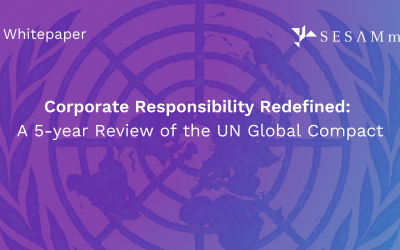Carbon Trading: The Basics
Carbon trading, also commonly referred to as emissions trading, is a developing industry which will continue to grow as governments, nations and companies take vital steps towards implementing strategies to reduce greenhouse gas emissions

Carbon trading, also commonly referred to as emissions trading, is a developing industry which will continue to grow as governments, nations and companies take vital steps towards implementing strategies to reduce greenhouse gas emissions.
What is carbon trading?
Carbon trading is very similar to any other form of trading e.g. grain trading or equities trading. There is a buyer and seller who exchange money for a particular instrument or commodity. With carbon trading this occurs when a seller exchanges a carbon credit for a particular monetary amount with a buyer. Currently these transactions occur directly between the buyer and seller in an over-the-counter (OTC) manner or through a formal electronic exchange, such as Carbon Trade Exchange.
What is a carbon credit?
A carbon or emissions credit is a financial instrument equivalent to either (a) the right to emit 1 metric ton of CO2 or an equivalent GHG (i.e. a carbon allowance) or (b) the reduction or sequestration of 1 metric ton of CO2 or an equivalent GHG (i.e. a carbon offset). It is important to note that carbon credits differ from carbon allowances although the term carbon credit is used interchangeably for both. While they both represent one tonne of carbon dioxide equivalent, allowances do not originate from carbon reduction projects, instead are allocated to companies under a ‘cap and trade’ system such as the EU Emissions Trading Scheme – therefore, they represent the right to emit.
How are the credits issued and stored?
Both carbon allowances and offsets are issued and stored electronically by a registry which ensures the legitimacy of the instruments. A registry is a database that tracks the ownership of carbon credits over their lifetime, and the credits can be moved across registries. Registries are essential for issuing, holding, and transferring carbon credits. Once a carbon project or entity is issued with credits, the registry gives each one a unique serial number so that they can be tracked through their entire lifecycle. Registries also facilitate the retirement (surrendering of credits) ensuring credits are not resold at a later date.
Sponsored Content
Types of carbon markets
The world’s carbon markets can be divided into two groups; the voluntary market and the compliance (regulatory) market.
In the voluntary market, carbon credits are generated by carbon reduction projects that are accredited to independent international standards such as the Verified Carbon Standard, the Gold Standard, Climate Action Reserve and American Carbon Registry. The registries associated with these standards, such as APX Environmental Registry, issue the credits to the projects originators who act as sellers, while companies wanting to voluntarily offset their emissions are the buyers who purchase the credits.
Carbon offset projects in this market are verified by independent third party auditors who play an important role alongside the registry. They asses the quantification of actual emission reductions ensuring that these correspond to the number of credits issued to the project.
The compliance market is a result of government legislation that requires particular companies or entities to purchase offsets and/or allowances based on their emissions. Examples of programs in the compliance market include the Regional Greenhouse Gas Initiative (RGGI), the California Cap and Trade Program and the European Emissions Trading Scheme. In the compliance markets, each scheme has its own arrangements with regards to registries.
The overall impact of carbon trading
Carbon trading offers an immediate answer to reducing carbon and other greenhouse gas emissions in the atmosphere in an efficient and effective manner. Carbon credits make a real difference by reducing, avoiding or sequestering greenhouse gas emissions and by making companies and entities responsible and accountable for their emissions. Furthermore, the generation and sale of credits funds carbon projects which would not have gone ahead under a business as usual circumstance. Carbon credits also help lower the costs of renewable and low carbon technologies.





_400_250_80_s_c1.jpg)
